 W
WLouis d'Ailleboust de Coulonge was the French governor of New France from 1648 to 1651 and acting governor from 1657 to 1658. He built what is today known as Duke of Kent House, Quebec.
 W
WThe Algonquin was a 74-gun ship of the line of the French Navy. She was launched from Québec City in, on 9 June 1753 and placed into service on 8 January 1754.
 W
WJacques Archambault was a French colonist in Montreal. He was born in Dompierre-sur-Mer, where he was baptized.
 W
WHélène Boullé was the wife of Samuel de Champlain at age thirteen, while he was 44, 30 year difference. She was given in marriage to Samuel at age 13, but needed two years of lapse before the cohabitation of the couple, as stated by their marriage contract. Helene's father was Nicolas Boullé, who was the Lord Chamberlain of France. After de Champlain's death in December 1635, Hélène became an Ursuline nun.
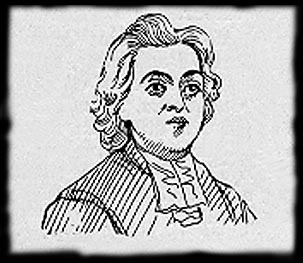 W
WJean Bourdon was the first engineer-in-chief and land-surveyor in the colony of New France, and the first attorney-general of the Conseil Superieur.
 W
WFrançois Dollier de Casson was born in France into a wealthy bourgeois and military family. He began his adult life in the army which he left after three years to continue his studies and become a priest.
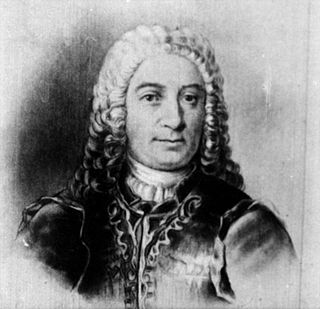 W
WCharles Aubert de La Chesnaye was a French businessman active in Canada. The richest financier and businessman in New France, he played an important part in the colony's economic life, owned several seigneuries and was a member of the Sovereign Council of New France. In 1682 he founded the Compagnie du Nord to compete with the Hudson's Bay Company. He has been called "the principal businessman and the greatest landowner of the colony". Several places in the Quebec province and Quebec City are named after him and in 1971 he was made one of Canada's Persons of National Historic Significance. His descendants include the writer Philippe-Joseph Aubert de Gaspé.
 W
WBaron Pierre Dubois Davaugour was the French soldier and Governor of New France from 1661 to 1663.
 W
WMichel-Ange Du Quesne de Menneville, Marquis Du Quesne was a French Governor General of New France. He was born in Toulon, France.
 W
WFort Assumption was a French fortification constructed in 1739 on the fourth Chickasaw Bluff on the Mississippi River in Shelby County, present day Memphis, Tennessee. The fort was used as a base against the Chickasaw in the unsuccessful Indian-removal Campaign of 1739.
 W
WFort Dauphin, was built in 1741 near Winnipegosis, Manitoba with Pierre Gaultier de La Vérendrye, the western military commander, directing construction. The area provided a post located between the Assiniboine River and the Saskatchewan River. It was named for the Dauphin prince of France.
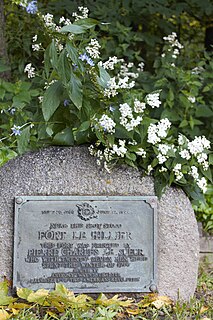 W
WFort L'Huillier was a short-lived fortification in New France located near the confluence of the Blue Earth and Le Sueur Rivers in what is now Minnesota.
 W
WFort Tombecbe, also spelled Tombecbee and Tombeché, was a stockade fort located on the Tombigbee River near the border of French Louisiana, in what is now Sumter County, Alabama. It was constructed under the leadership of Jean-Baptiste Le Moyne, Sieur de Bienville in 1736-37 as trading post about 270 miles (430 km) upriver from Mobile, on an 80-foot (24 m) limestone bluff. Fort Tombecbe was built in Choctaw lands and would play a major role in colonial France's efforts to stop British intrusions into the area. Bienville claimed that the new fort was to protect the Choctaw from the Chickasaw. Tombecbe was a major French outpost and trade depot among the Choctaw, the largest Native American group in the colony.
 W
WThe term French Louisiana refers to two distinct regions:first, to colonial French Louisiana, comprising the massive, middle section of North America claimed by France during the 17th and 18th centuries; and, second, to modern French Louisiana, which stretches across the southern extreme of the present-day state of Louisiana.
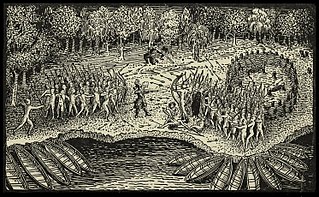 W
WDuring the summer of 1609, Samuel de Champlain attempted to form better relations with the local native tribes. He made alliances with the Wendat and with the Algonquin, the Montagnais and the Etchemin, who lived in the area of the St. Lawrence River. These tribes demanded that Champlain help them in their war against the Iroquois, who lived further south. Champlain set off with 9 French soldiers and 300 natives to explore the Rivière des Iroquois, and became the first European to map Lake Champlain. Having had no encounters with the Iroquois at this point many of the men headed back, leaving Champlain with only 2 Frenchmen and 60 natives.
 W
WCharles (II) le Moyne de Longueuil, Baron de Longueuil was the first native-born Canadian to be made Baron in New France.
 W
WDaniel Hyacinthe Liénard de Beaujeu was a French officer during King George's War and the Seven Years' War. He participated in the Battle of Grand Pre (1747). He also organized the force that attacked General Edward Braddock's army after it forded the Monongahela River. The event was later dubbed the Battle of the Monongahela. Beaujeu led his small force into the attack, where he was shot dead in the opening moments when the attack was launched on July 9, 1755. However, his patronage to the Native American customs, such as wearing war paint and regalia, helped raise the morale and fighting tenacity of the warriors under his command.
 W
WAnne Joseph Hippolyte de Maurès, Comte de Malartic was a French colonial governor and general, notable for his service in Canada and Mauritius.
 W
WAugustin de Saffray de Mésy (1598–1665) was the first Governor General of New France in 1663 after Louis XIV took over the administration of New France from the Compagnie des Cent-Associés.
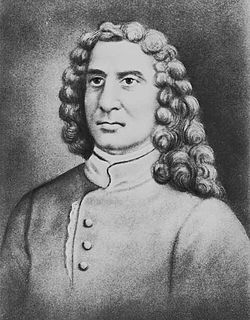 W
WCharles Jacques Huault de Montmagny was governor of New France from 1636 to 1648. He was the first person to bear the title of Governor of New France and succeeded Samuel de Champlain, who governed the colony as Lieutenant General of New France. Montmagny was able to negotiate a peace treaty with the Iroquois at Trois-Rivières in 1645.
 W
WDaniel de Rémy de Courcelle, Sieur de Montigny, de La Fresnaye et de Courcelle was the Governor General of New France from 1665 to 1672.
 W
WBarthélemy Vimont was a French Jesuit missionary in New France, North America.